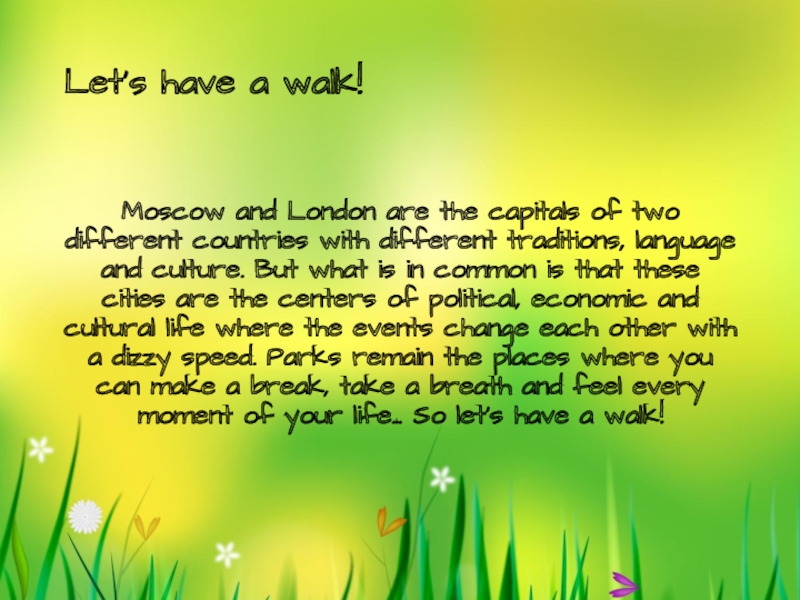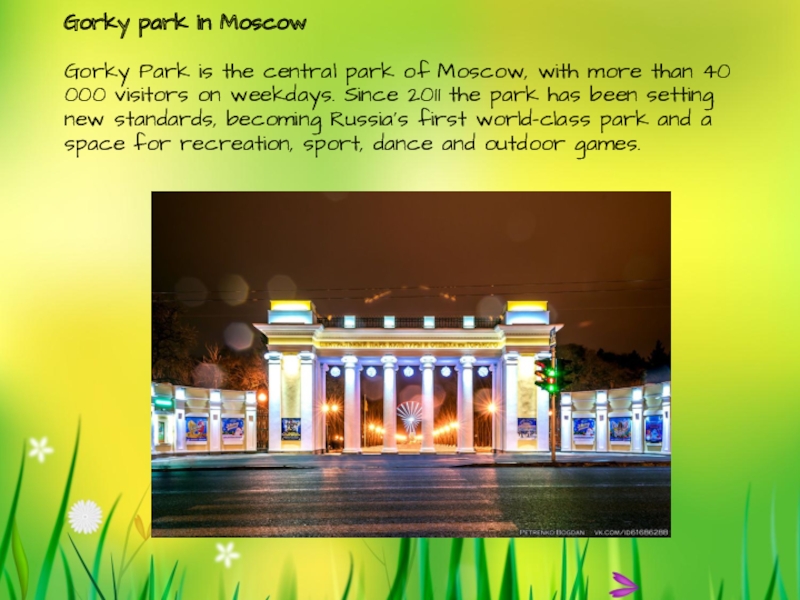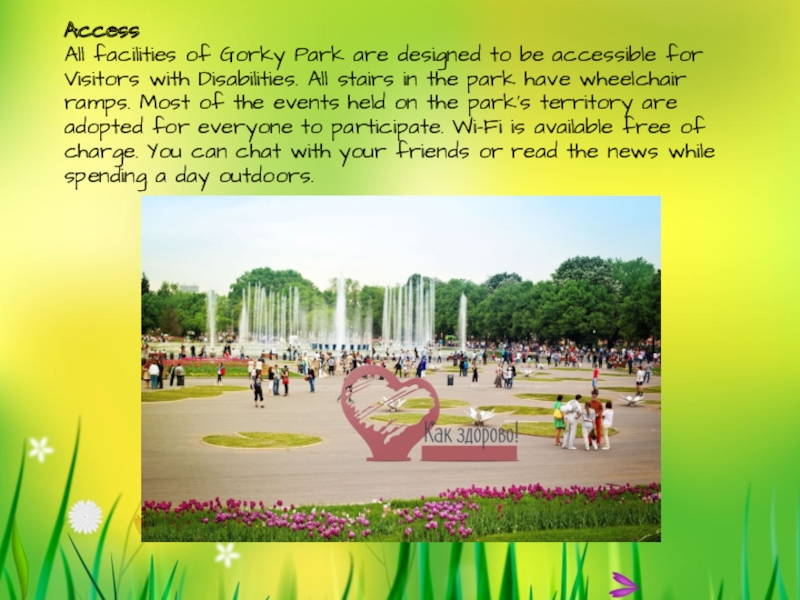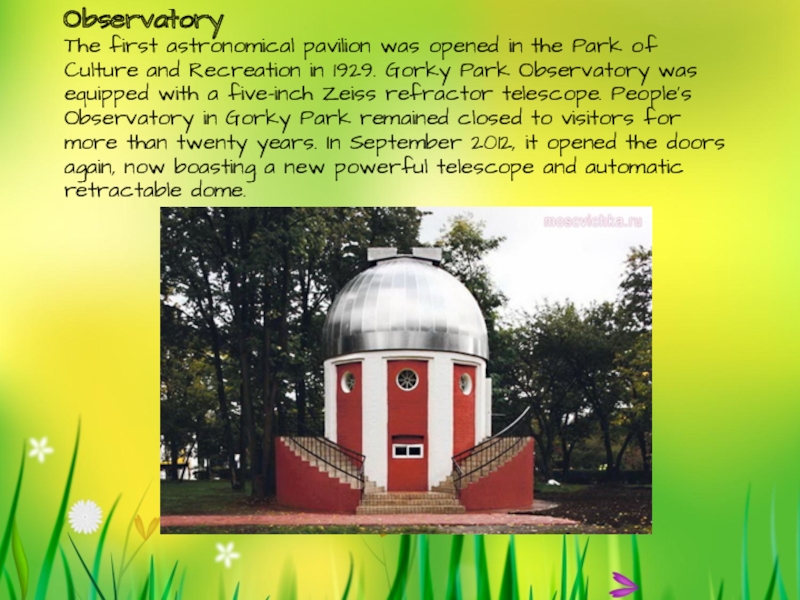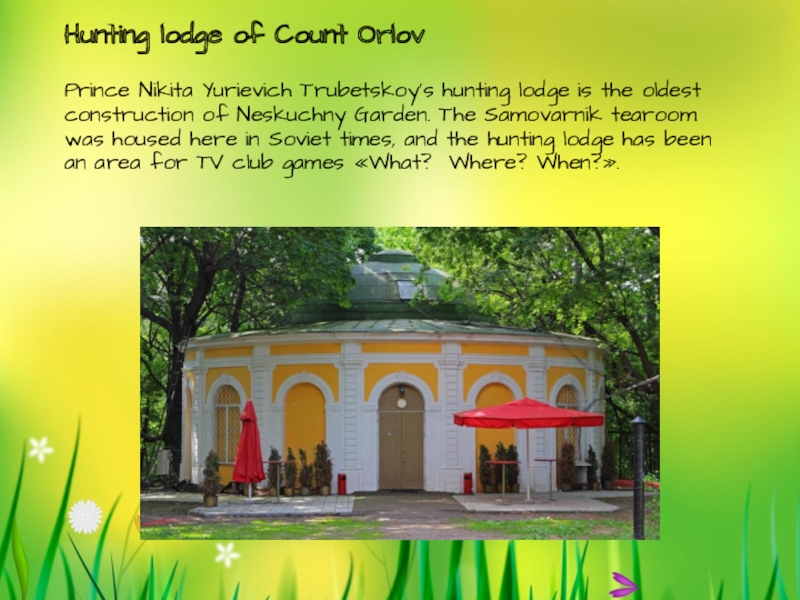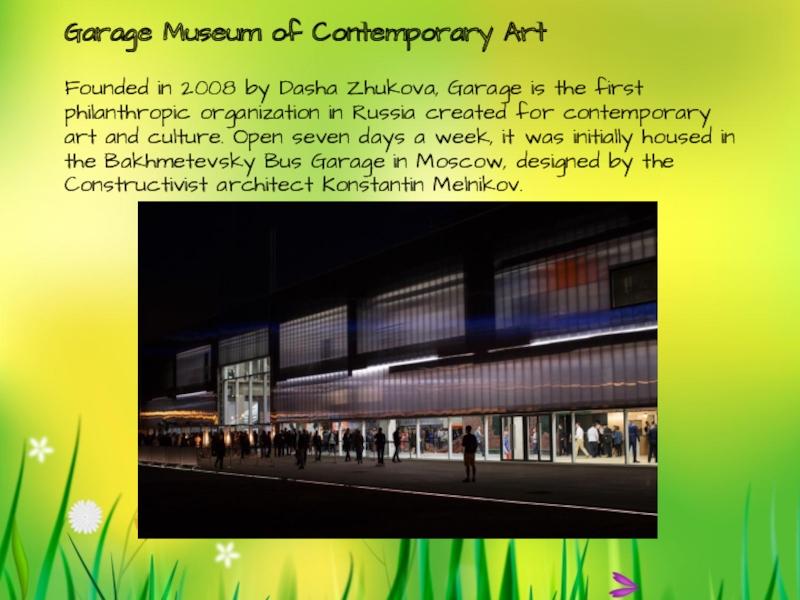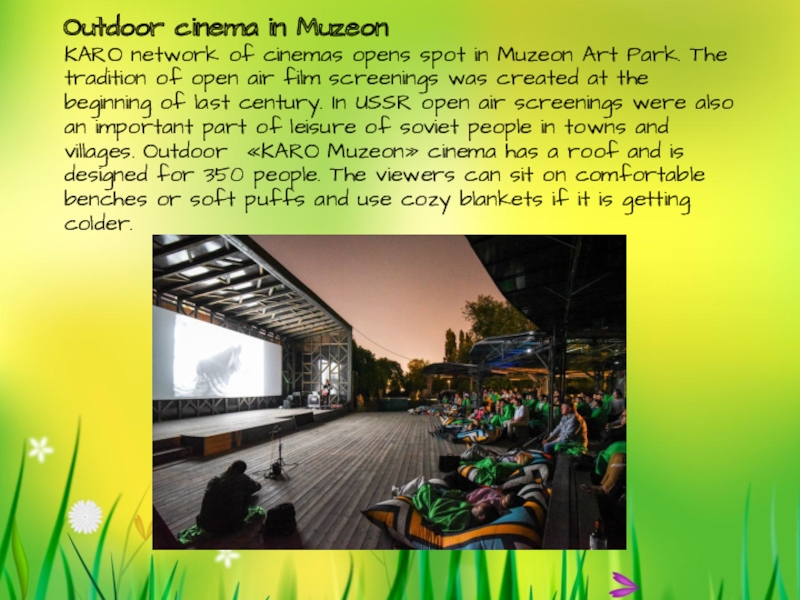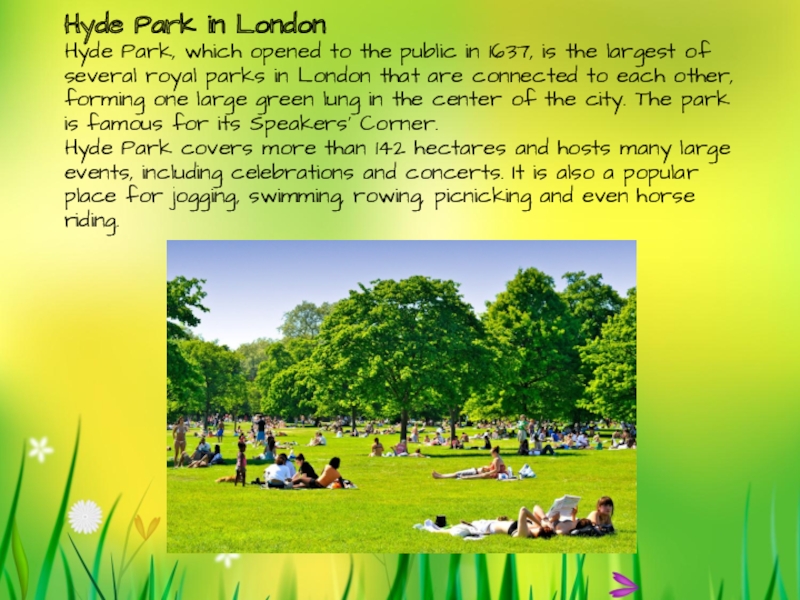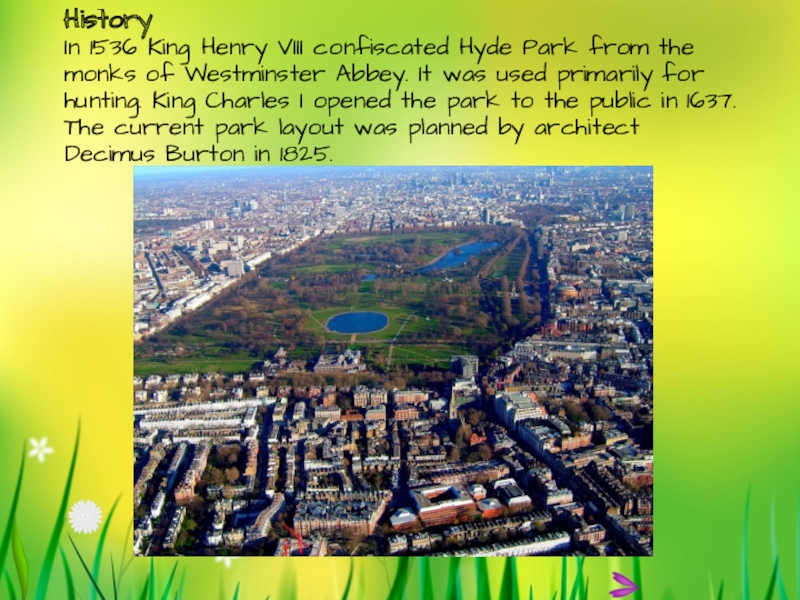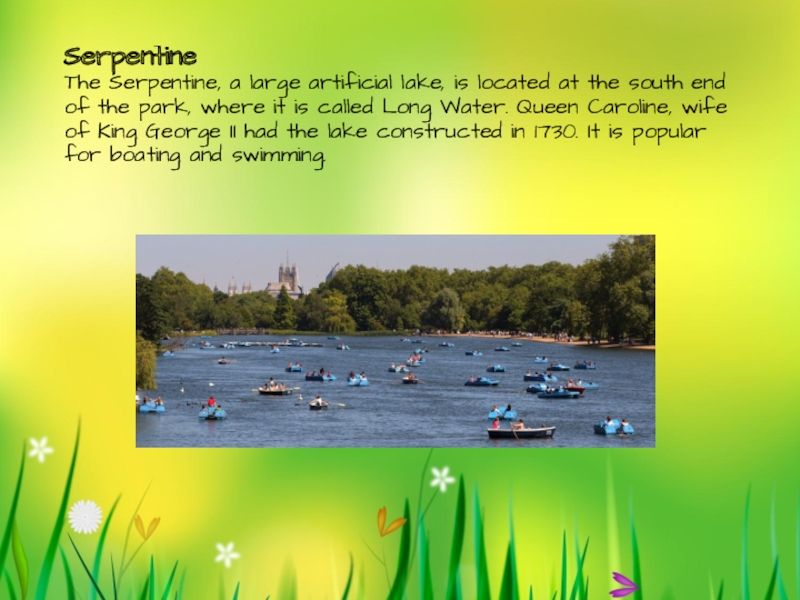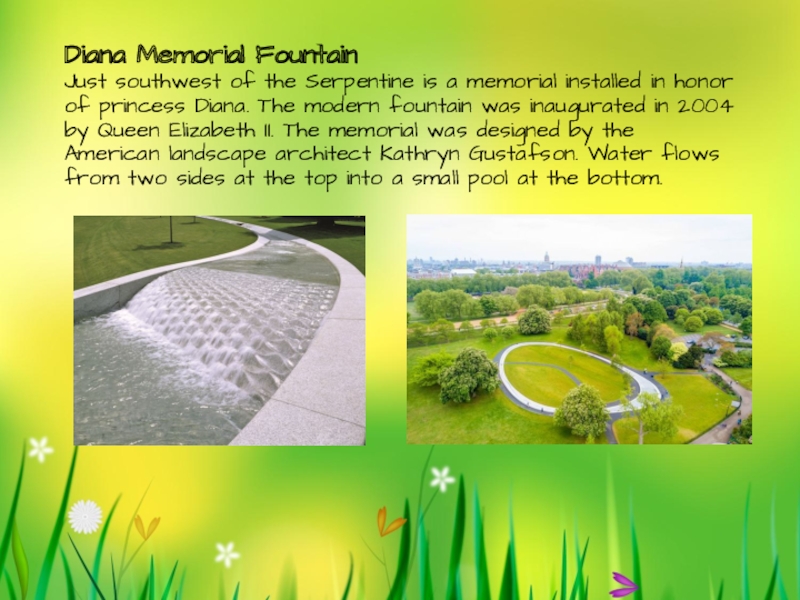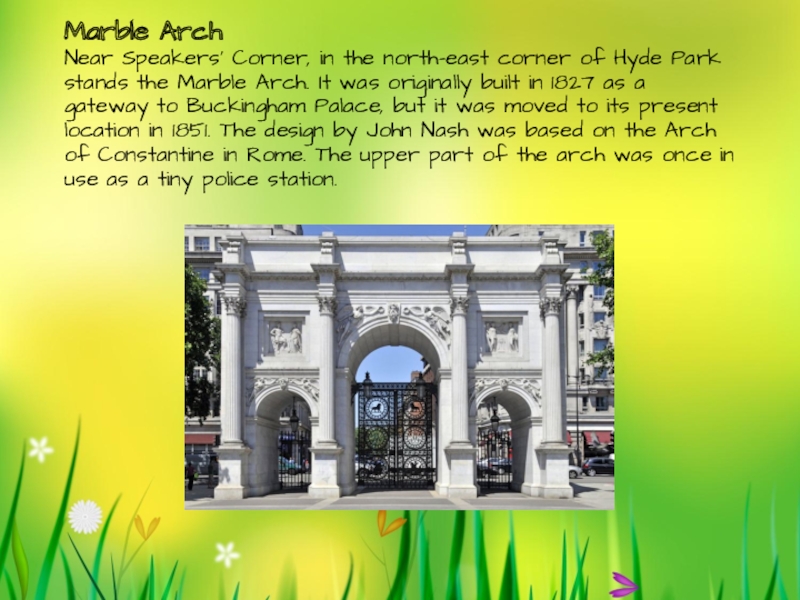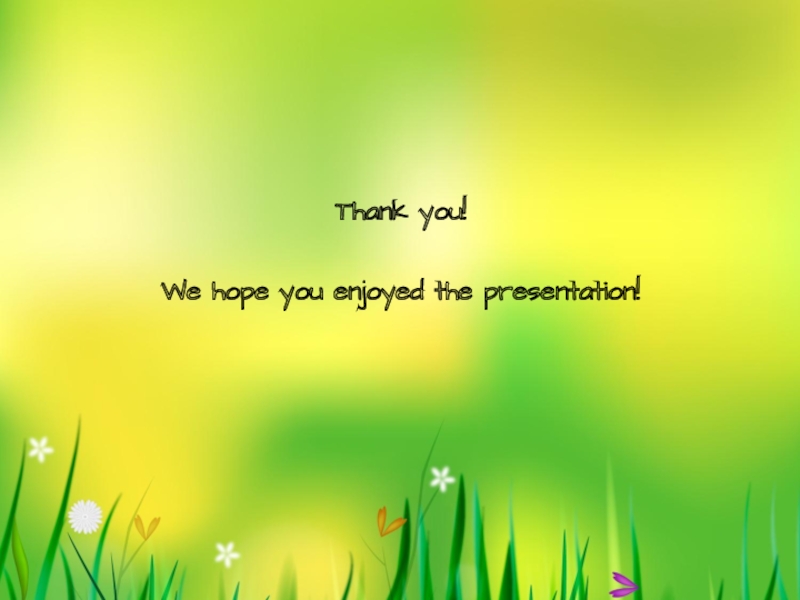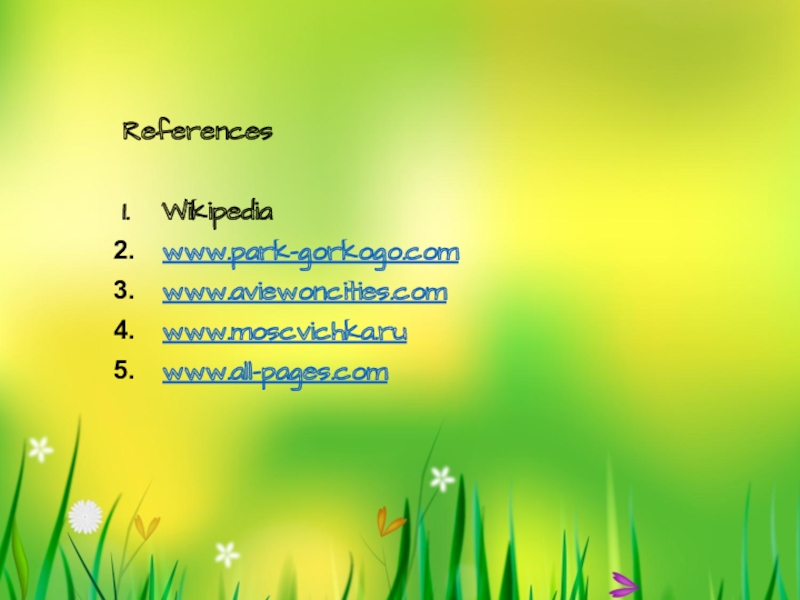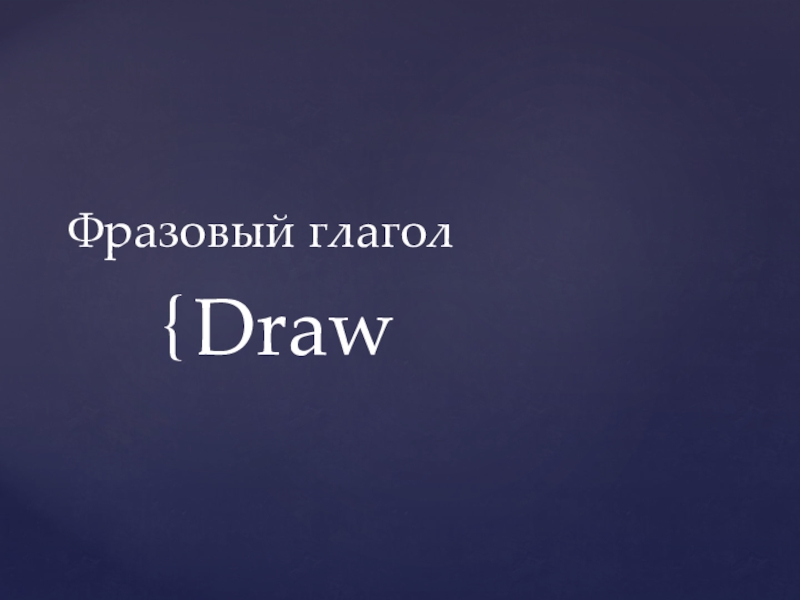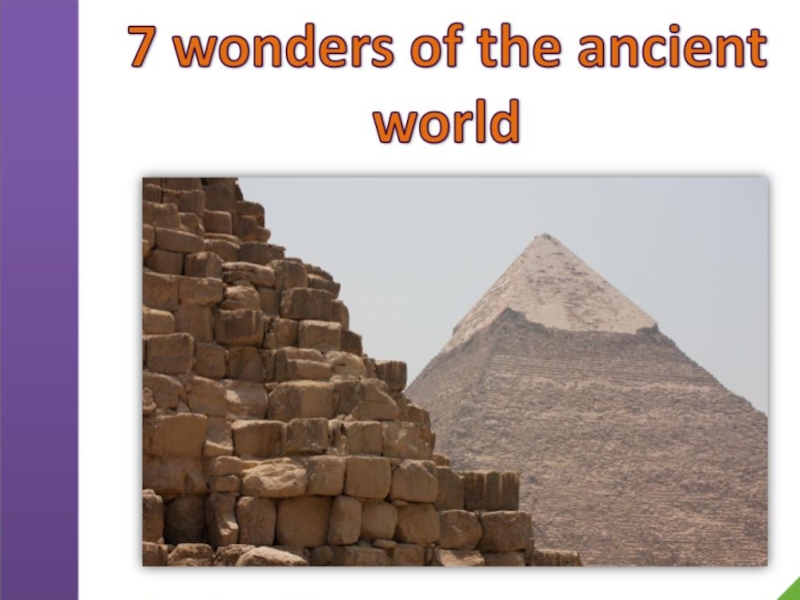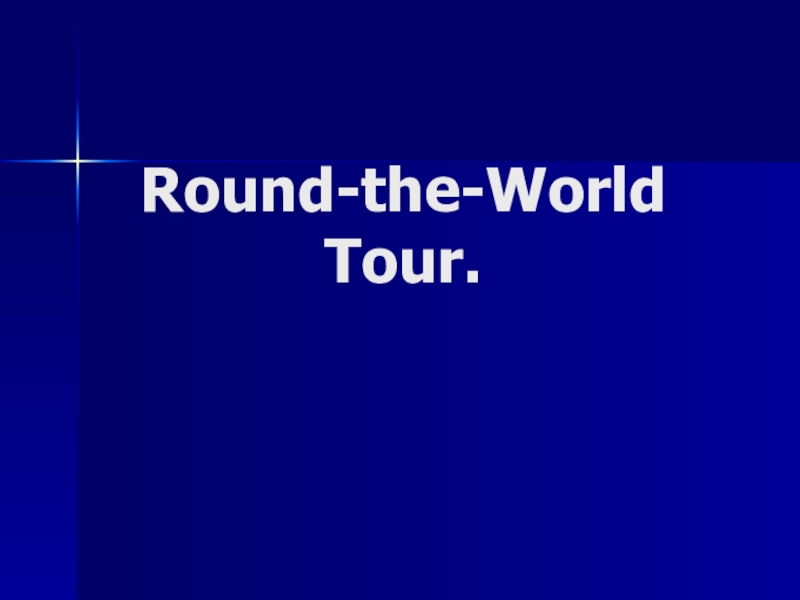- Главная
- Разное
- Образование
- Спорт
- Естествознание
- Природоведение
- Религиоведение
- Французский язык
- Черчение
- Английский язык
- Астрономия
- Алгебра
- Биология
- География
- Геометрия
- Детские презентации
- Информатика
- История
- Литература
- Математика
- Музыка
- МХК
- Немецкий язык
- ОБЖ
- Обществознание
- Окружающий мир
- Педагогика
- Русский язык
- Технология
- Физика
- Философия
- Химия
- Шаблоны, фоны, картинки для презентаций
- Экология
- Экономика
Презентация, доклад The parks: Gorky Park in Moscow and Hyde Park in London
Содержание
- 1. Презентация The parks: Gorky Park in Moscow and Hyde Park in London
- 2. Let’s have a walk! Moscow
- 3. Gorky park in Moscow Gorky Park
- 4. Access All facilities of Gorky Park
- 5. About the Main Entrance Gorky Park Main
- 6. Observatory The first astronomical pavilion was opened
- 7. Hunting lodge of Count Orlov Prince
- 8. Garage Museum of Contemporary Art Founded
- 9. Outdoor cinema in Muzeon KARO network of
- 10. Hyde Park in London Hyde Park, which
- 11. History In 1536 King Henry VIII confiscated
- 12. Serpentine The Serpentine, a large artificial
- 13. Diana Memorial Fountain Just southwest of the
- 14. Rotten Row At the south end of
- 15. Speakers' Corner In the nineteenth century Hyde
- 16. Marble Arch Near Speakers' Corner, in the
- 17. Thank you! We hope you enjoyed the presentation!
- 18. References1. Wikipediawww.park-gorkogo.comwww.aviewoncities.comwww.moscvichka.ruwww.all-pages.com
Let’s have a walk! Moscow and London are the capitals of two different countries with different traditions, language and culture. But what is in common is that these cities are the centers of political,
Слайд 2
Let’s have a walk!
Moscow and London are the capitals of two
different countries with different traditions, language and culture. But what is in common is that these cities are the centers of political, economic and cultural life where the events change each other with a dizzy speed. Parks remain the places where you can make a break, take a breath and feel every moment of your life… So let’s have a walk!
Слайд 3Gorky park in Moscow Gorky Park is the central park of Moscow,
with more than 40 000 visitors on weekdays. Since 2011 the park has been setting new standards, becoming Russia’s first world-class park and a space for recreation, sport, dance and outdoor games.
Слайд 4Access All facilities of Gorky Park are designed to be accessible
for Visitors with Disabilities. All stairs in the park have wheelchair ramps. Most of the events held on the park’s territory are adopted for everyone to participate. Wi-Fi is available free of charge. You can chat with your friends or read the news while spending a day outdoors.
Слайд 5About the Main Entrance Gorky Park Main Entrance was built in 1995
according to the project of the architects G Shuko and A Spasov. In February 2014, the Main Entrance, as a symbol of the Park and the city was closed for restoration works. The inside part of the building was advanced and consolidated, leaving the original historical appearance of the Entrance from the outside.
Слайд 6Observatory The first astronomical pavilion was opened in the Park of Culture
and Recreation in 1929. Gorky Park Observatory was equipped with a five-inch Zeiss refractor telescope. People’s Observatory in Gorky Park remained closed to visitors for more than twenty years. In September 2012, it opened the doors again, now boasting a new powerful telescope and automatic retractable dome.
Слайд 7Hunting lodge of Count Orlov Prince Nikita Yurievich Trubetskoy’s hunting lodge is
the oldest construction of Neskuchny Garden. The Samovarnik tearoom was housed here in Soviet times, and the hunting lodge has been an area for TV club games «What? Where? When?».
Слайд 8Garage Museum of Contemporary Art Founded in 2008 by Dasha Zhukova, Garage
is the first philanthropic organization in Russia created for contemporary art and culture. Open seven days a week, it was initially housed in the Bakhmetevsky Bus Garage in Moscow, designed by the Constructivist architect Konstantin Melnikov.
Слайд 9Outdoor cinema in Muzeon KARO network of cinemas opens spot in Muzeon
Art Park. The tradition of open air film screenings was created at the beginning of last century. In USSR open air screenings were also an important part of leisure of soviet people in towns and villages. Outdoor «KARO Muzeon» cinema has a roof and is designed for 350 people. The viewers can sit on comfortable benches or soft puffs and use cozy blankets if it is getting colder.
Слайд 10Hyde Park in London Hyde Park, which opened to the public in
1637, is the largest of several royal parks in London that are connected to each other, forming one large green lung in the center of the city. The park is famous for its Speakers' Corner.
Hyde Park covers more than 142 hectares and hosts many large events, including celebrations and concerts. It is also a popular place for jogging, swimming, rowing, picnicking and even horse riding.
Слайд 11History In 1536 King Henry VIII confiscated Hyde Park from the monks
of Westminster Abbey. It was used primarily for hunting. King Charles I opened the park to the public in 1637. The current park layout was planned by architect Decimus Burton in 1825.
Слайд 12 Serpentine The Serpentine, a large artificial lake, is located at the south
end of the park, where it is called Long Water. Queen Caroline, wife of King George II had the lake constructed in 1730. It is popular for boating and swimming.
Слайд 13Diana Memorial Fountain Just southwest of the Serpentine is a memorial installed
in honor of princess Diana. The modern fountain was inaugurated in 2004 by Queen Elizabeth II. The memorial was designed by the American landscape architect Kathryn Gustafson. Water flows from two sides at the top into a small pool at the bottom.
Слайд 14Rotten Row At the south end of Hyde park is Rotten Row,
a famous bridle path. The road is almost four miles long and is now used as a horse riding and jogging route. In the seventeenth century the road was often used by William III. The term 'Rotten Row' is derived from the French 'route du roi' or King's road.
Слайд 15Speakers' Corner In the nineteenth century Hyde Park had become a popular
place for meetings. The Speakers' Corner was created as a place where people would be allowed to speak freely. Here, every Sunday people stand on a soap box and proclaim their views on political, religious or other items, sometimes interrupted and challenged by their audience.
Слайд 16Marble Arch Near Speakers' Corner, in the north-east corner of Hyde Park
stands the Marble Arch. It was originally built in 1827 as a gateway to Buckingham Palace, but it was moved to its present location in 1851. The design by John Nash was based on the Arch of Constantine in Rome. The upper part of the arch was once in use as a tiny police station.

